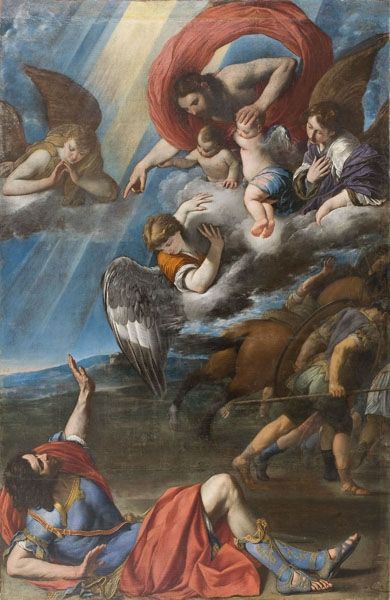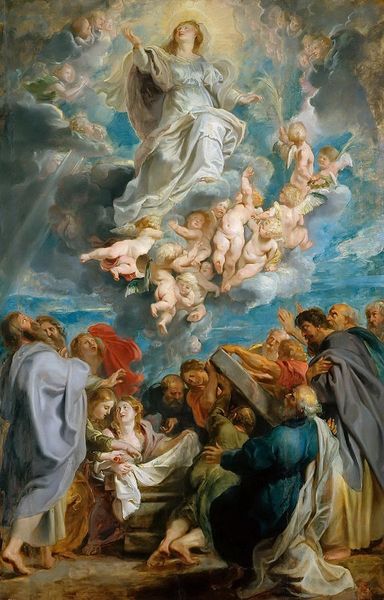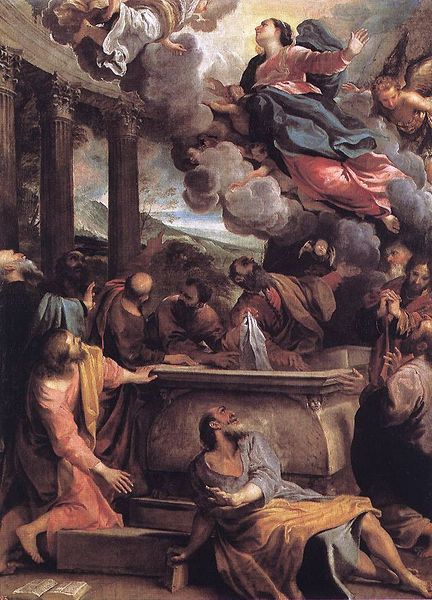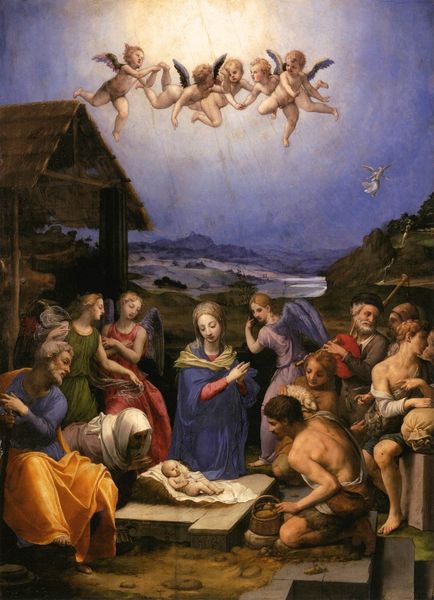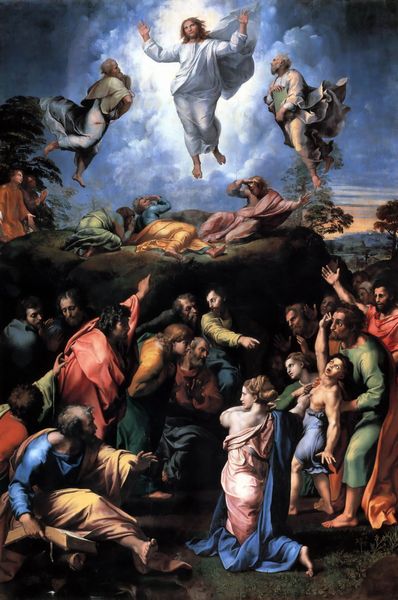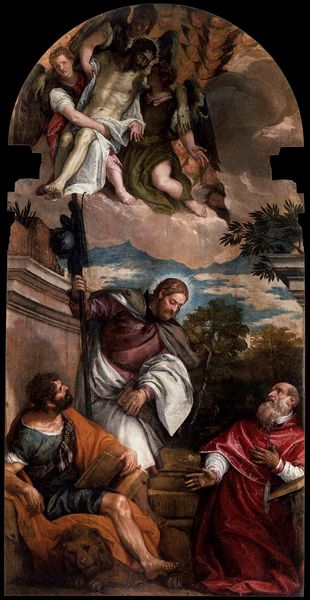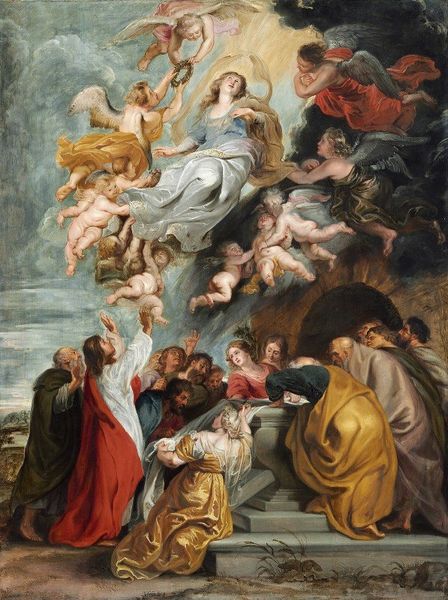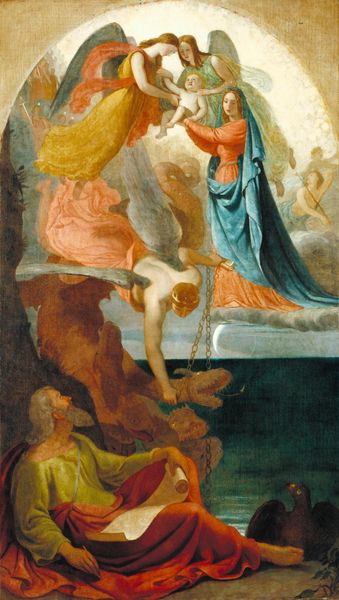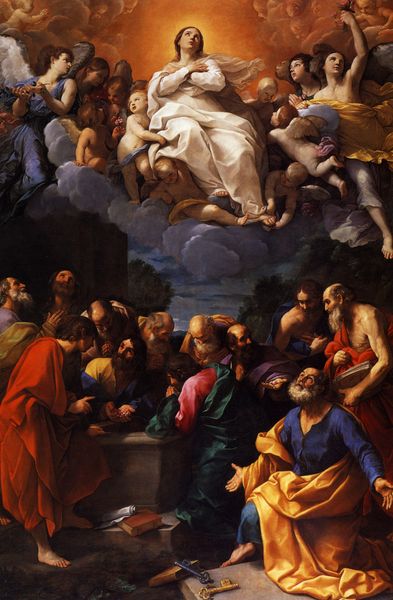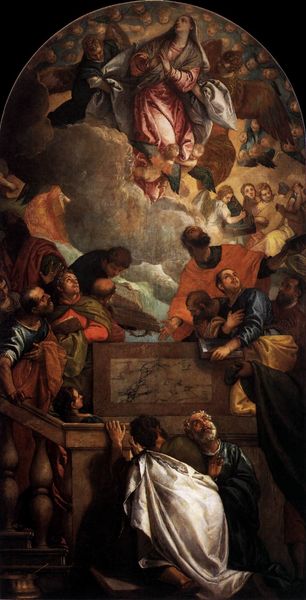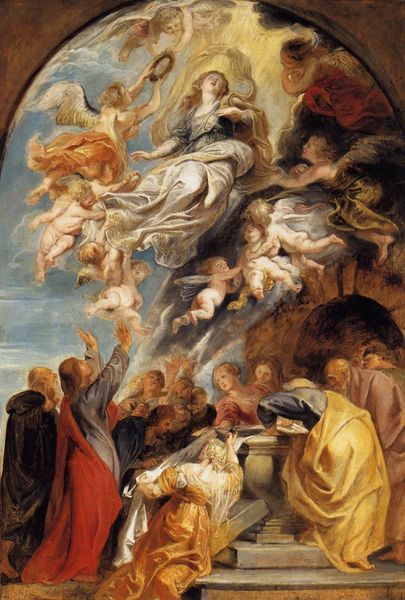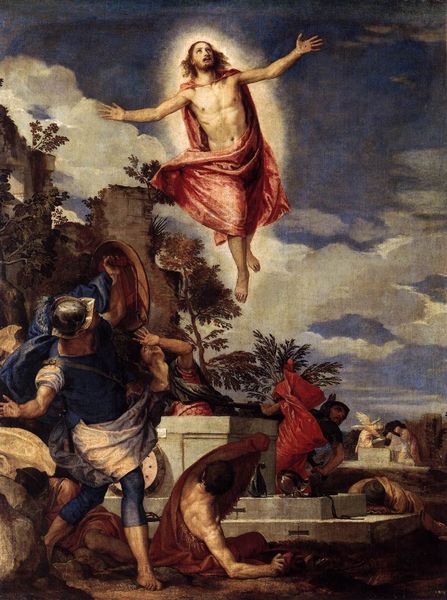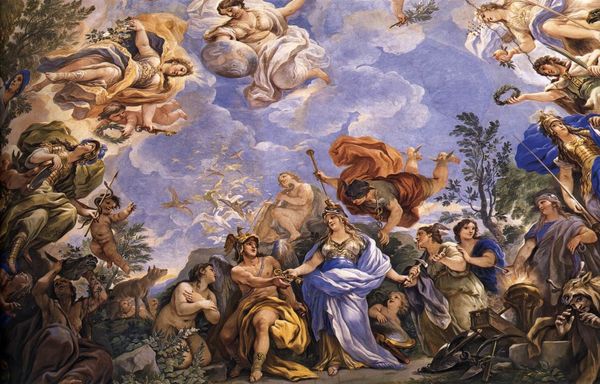
oil-paint
#
portrait
#
narrative-art
#
baroque
#
oil-paint
#
figuration
#
oil painting
#
child
#
christianity
#
mythology
#
history-painting
#
italian-renaissance
#
angel
Dimensions: 250 x 150 cm
Copyright: Public domain
Curator: Annibale Carracci painted this oil on canvas titled "Translation of the Holy House" around 1605. What strikes you initially? Editor: The asymmetry is quite interesting. The Madonna and child sit atop a plain, weighty house hoisted by angels, while more angels prepare to crown them. It's as if the sacred image is being forcefully moved, its divine status already secure. Curator: Yes, the solid depiction of the house contrasts dramatically with the ethereal figures surrounding it. It’s believed Carracci referenced the legend of the Santa Casa, the Virgin Mary's house in Nazareth, said to have been miraculously transported to Loreto, Italy, by angels. Consider the socio-political implications – the papacy asserting divine intervention during a period of religious upheaval. Editor: And how the materiality amplifies this message. The stark realism of the house suggests the physical labor and craft involved in its construction. Then there is the radiant oil rendering the holy figures – creating a visual hierarchy which clearly places the spiritual realm above the terrestrial one. The labour and movement is depicted in how the angel forms strain and hold in bearing the holy home, whereas the angels are depicted lifting a burden - it is about hard work and materiality as well as holiness. Curator: Observe also the colour palette Carracci uses – predominantly blues and reds which further divide the work and its significance. This interplay creates a dramatic visual tension. It makes one consider the function of art in the Baroque era. Is this piece designed primarily for aesthetic pleasure or does its true function lie in communicating specific religious and political doctrines? Editor: I'm captivated by Carracci’s use of perspective and the strategic placement of figures. The composition forces the viewer's eye upward, toward the crowning scene. It masterfully embodies Counter-Reformation ideals – visual rhetoric aimed at inspiring piety. Curator: And it speaks volumes, doesn’t it? About faith, about power, and about the tangible weight of belief in a changing world. The deliberate contrasts really underline that message. Editor: Precisely. Ultimately it provokes questions regarding labor, power, and faith within the context of 17th-century religious dynamics, and what art contributes as a tool in propagating this.
Comments
No comments
Be the first to comment and join the conversation on the ultimate creative platform.
